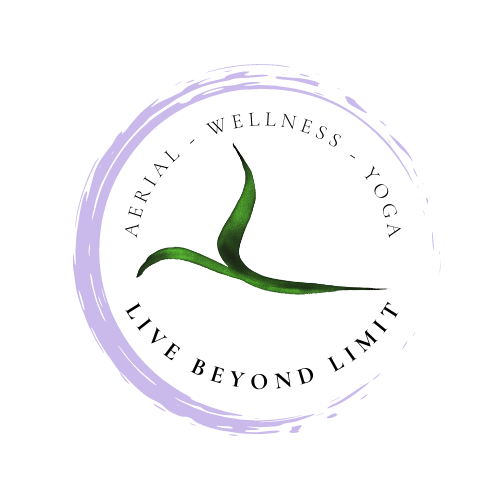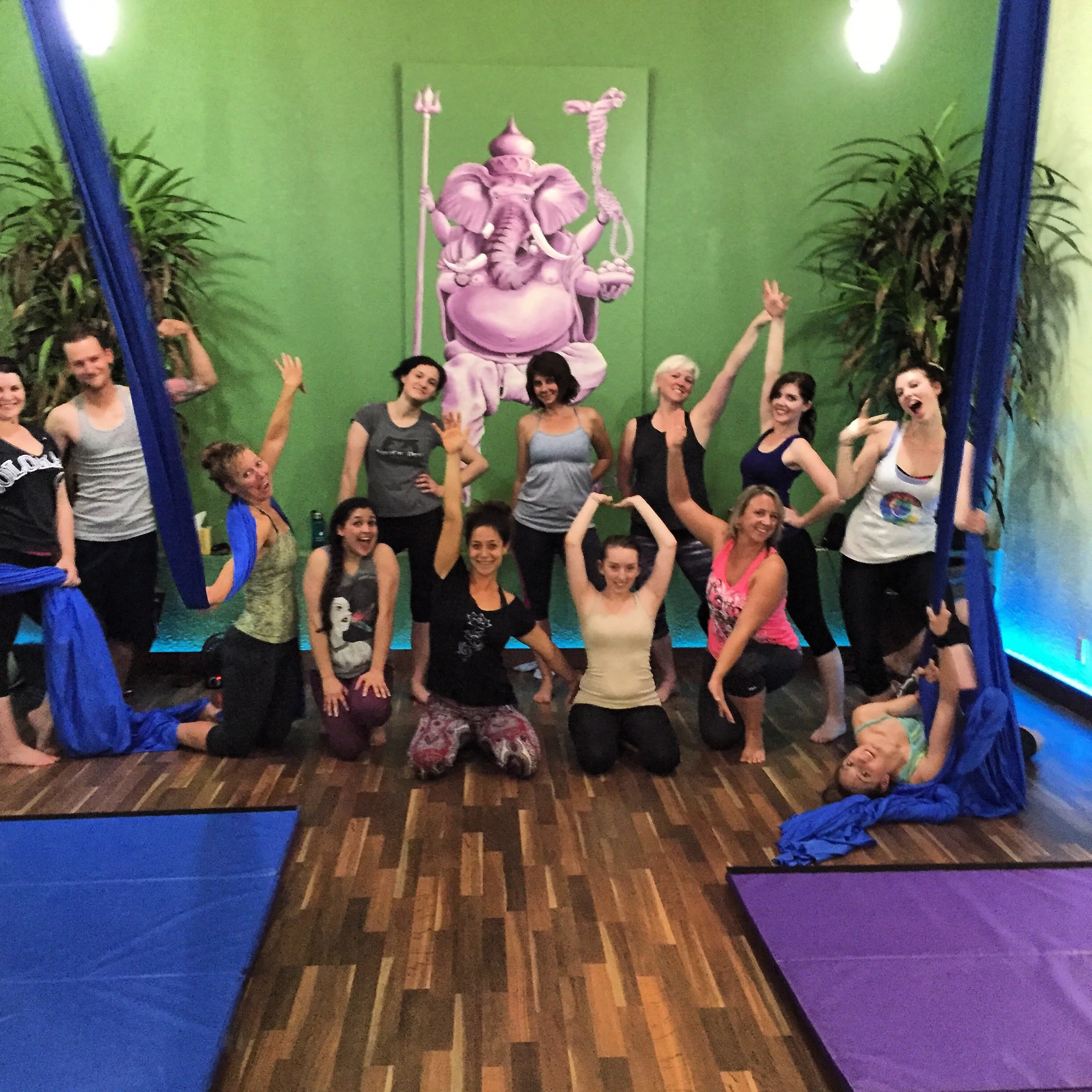By: Alexandra Nikolova
Being an aerial instructor and performer, I have often heard a lot of similar perceptions over the years from people about why they believe they could never attempt or be successful at trying an aerial class. To their surprise, however, many of their preconceived ideas are nothing more than false misconceptions. In this brief blog, I will unlock some of the main myths most commonly seen in the aerial arts.
1. You already have to have a lot of strength, including upper body strength, to try aerial.
Though a certain amount of strength is needed to lift up into the air, what most people do not realize is that aerial is just as much about technique as it is about strength. By learning proper technique, you learn how to utilize the whole body including legs and feet to help assist your arm strength when trying to lift the body off the ground; you learn tips on how to become more efficient when using arm strength, and how to save upper body energy when needed.
Example: Straight vs. bent arms when trying to climb aerial silks- Bent arms
requires more strength in the biceps to keep you lifted as you climb. Often times beginner level students who are still building this strength have that "freak out" moment that they can no longer stay engaged, and so, they get too mentally frantic prohibiting them from thinking of and executing the correct mechanism to wrap their feet to continue climbing. Should we try this approach from straight-arm, we no longer have to be engaged in the biceps and are relying primarily on our grip & lat strength as shoulders maintain engaged on the back to hang. This approach is much less intimidating as we usually are able to hang much longer from straight-arm vs. bent arms. Thus, this technique provides the student with enough time to think calmly (and logically) on how to wrap their feet up in the silk to continue gaining height).
By virtue of coming to aerial class, you gain the strength needed to advance over time! This alternative method of fitness is, what I believe, a much more functional way of building strength and getting fit; you're learning how to use the whole body (core, arms, legs, back, shoulders, chest), and you learn how to lift your entire body weight with complex and dynamic movements (working in all planes of motion). Plus, an added bonus.... it’s SO FUN!
If you are really starting from "ground zero" and aerial acrobatics truly intimidates you, perhaps the new, emerging trend of aerial yoga is a great fit for you. This is a wonderful way to explore the air and build strength in a scenario that may be a bit less intimidating for students just stepping into the world of aerial arts and fitness.
2. Aerial dance is only for women.
Hello you men out there, you are woefully mistaken!
Though the aerial world certainly has a number of male aerialists, I feel this type of dance/art form is has become more popularized and welcomed by the female community (most popularized apparatus being the aerial silks). I'm not sure if it's the pretty, long draping fabric that turns men away, but quite honestly, for the guys who simply turn aerial dance down purely on the basis of, "it's a girl thing", I think they are missing out on an incredible way to train their bodies, build strength and flexibility, and explore a whole new realm of expressing themselves.
Like I mentioned before, the amount of energy needed to execute high level/advanced maneuvers requires an immense amount of strength and muscle, especially when you begin to get into duo/partner work (so come join us!). If silks aren't your thing, perhaps try corde lisse (aerial rope) or straps as it could appear a little less "pretty"without the draping fabric....
3. I'm too old to start trying new things, especially something as hard as aerial.
Contrary to this stigma, I've had many students well beyond their 40's who have taken my classes, and came out successful when trying aerial. I believe if there is a desire and curiosity to try it, along with an open mind and playful heart, it's definitely achievable!
Additionally, I know numerous aerialists in our Northern Colorado community that are well into their 50s and 60s who began training aerial in the later years of their life, and yet, they still perform some of the largest drops seen in aerial...all with a smile, of course!
4. I am too scared to try aerial because I don't like heights.
This is a valid concern, however, I want to stress to all these readers that when first beginning your training, all skills are practiced over and over again very low to the ground with a crash pad underneath you. In fact, this kind of methodology continues in your training, including for students of the advanced level.
The format in which I teach all my classes is to demonstrate the trick at hand, then walk students step-by- step through the movement on the ground, and finally allowing students to try the maneuver aerially (but only a foot or two off the ground as I spot them).
Aerial classes should provide an environment of safety and encouragement, so that when we do gain more strength and confidence in the air, we can take our tricks a bit higher into the air and feel comfortable about it! Additionally, if something truly doesn't feel safe to you, you can always choose to continue practicing the maneuver on the ground until you become more comfortable.
So there you have it - the common myths of aerial dance, unlocked!
Are you ready to bust through your misconceptions of aerial and fly with us?

